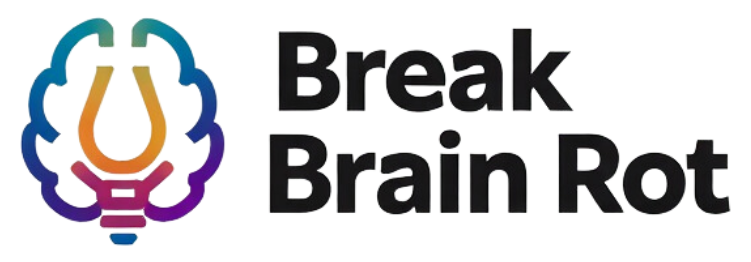In today’s digital world, your brain is constantly bombarded by notifications, social media, binge-worthy shows, and endless scrolling. Studies show that excessive stimulation from these activities can overload your brain’s reward system, making it harder to focus, think clearly, and stay motivated. That’s where dopamine fasting—a growing trend among Silicon Valley professionals—comes in. In this guide, you’ll discover exactly how to practice dopamine fasting to sharpen your focus, regain mental clarity, and take control of your habits. You’ll learn its science, preparation tips, a step-by-step approach, and how to avoid common mistakes so you can put it into practice right away.
Table of Contents
- What is Dopamine Fasting?
- Science Behind Dopamine Fasting
- How to Prepare for Dopamine Fasting
- Step-by-Step Guide on How to Practice Dopamine Fasting
- Common Mistakes and How to Avoid Them
- Potential Benefits and Drawbacks
- FAQs
- Conclusion
What is Dopamine Fasting?
The Origin and Definition of Dopamine Fasting
Dopamine fasting is a behavioral practice aimed at reducing overstimulation by taking intentional breaks from activities that trigger dopamine release. Popularized in Silicon Valley, the term was coined by psychiatrist Dr. Cameron Sepah, who recommended it as a tool for improving focus, impulse control, and self-discipline.
Misconceptions About Dopamine Fasting
Many believe dopamine fasting means avoiding dopamine altogether—an impossibility since dopamine is a natural neurotransmitter. Instead, it’s about limiting external stimulation to avoid overloading the reward system. Psychology Today explains that dopamine fasting is not a “detox” for dopamine itself, but a way to break compulsive behaviors.
How Dopamine Affects Focus and Reward Systems
Dopamine drives motivation, pleasure, and learning. It’s released when you anticipate or experience rewards, such as eating your favorite meal or receiving social media likes. Overexposure can lead to reduced sensitivity, making everyday tasks feel less rewarding. How Dopamine Influences Habits explores this in depth.
Science Behind Dopamine Fasting
The Brain’s Reward System and Overstimulation
The mesolimbic pathway—often called the brain’s reward pathway—releases dopamine when you do something pleasurable. Activities like binge-watching, gaming, or snacking on junk food can overstimulate this system, potentially reducing your ability to find joy in simple tasks (neuroscience research).
How Dopamine Fasting Aims to Reset Mental Clarity
When you reduce stimulating activities, you allow your brain’s dopamine receptors to recalibrate. This can enhance your baseline focus, making it easier to enjoy and concentrate on non-digital or low-stimulus activities.
Scientific Evidence and Debates on Its Effectiveness
While there’s debate about the neurological reset claim, evidence suggests that taking breaks from stimulating activities can improve attention, reduce impulsivity, and promote mindfulness—key benefits for productivity.
How to Prepare for Dopamine Fasting
Identifying Your Dopamine Triggers
Common triggers include social media scrolling, constant texting, gaming, high-sugar foods, and streaming platforms. Track your daily activities to spot patterns that could be leading to overstimulation.
Setting Clear Intentions and Goals
Define your purpose: Do you want better concentration for work? Reduced procrastination? Emotional regulation? Write your goals down for reference (Goal Setting for Mental Clarity).
Planning Your Fasting Period and Environment
Choose a time frame—perhaps one day a week or a few hours daily—and create an environment free from distractions. Practices like mindfulness meditation (Mindfulness Practices) can support your fasting efforts.
Step-by-Step Guide on How to Practice Dopamine Fasting
Choosing the Right Type of Dopamine Fast
- Intermittent: A few hours each day without primary dopamine triggers.
- Periodic: One full day each week device-free and stimulation-free.
- Extended: Multi-day fasts—only recommended for experienced practitioners.
Activities Allowed During a Dopamine Fast
Focus on low-stimulation, high-presence activities such as meditation, journaling, walking in nature, light stretching, or deep conversation. These activities promote mindfulness without overloading your brain’s reward system. See Benefits of Journaling for practical tips.
Tracking Your Progress and Evaluating Changes
Keep a journal to monitor mood, focus levels, and productivity. Regular reflection helps you identify which habits truly serve your long-term well-being and which do not.
Common Mistakes and How to Avoid Them
Confusing Dopamine Fasting with Deprivation or Isolation
This is not about punishment—it’s about mindful rest for your brain. Maintain a balance between disconnecting and engaging in healthy connections.
Being Overly Rigid and Unsustainable
Start small and scale up gradually. Too strict an approach can lead to burnout or frustration, reducing the effectiveness of your fasting practice.
Ignoring Mental and Emotional Well-being During the Process
Dopamine fasting should support your mental health, not harm it. If feelings of isolation or anxiety arise, adapt the practice to meet your needs.
Potential Benefits and Drawbacks
Positive Effects on Focus, Creativity, and Productivity
By reducing overstimulation, you allow your mind to function at its natural pace, increasing creativity, problem-solving ability, and sustained attention.
Possible Mental Challenges and Adapting Over Time
The first phase of dopamine fasting can feel uncomfortable due to withdrawal from pleasurable activities. With consistency, these feelings often subside, replaced by greater clarity and calm.
Who Should Avoid Dopamine Fasting
People with certain mental health conditions should proceed with caution. The Mental Health Foundation advises consulting a professional before attempting major shifts in behavior.

Frequently Asked Questions
What exactly is dopamine fasting and does it really work?
Dopamine fasting is reducing or eliminating high-stimulation activities for a set time to reset your focus and self-control. While the “dopamine reset” is debated, many find it beneficial for breaking unhelpful habits.
How long should I dopamine fast for best results?
Most people start with a few hours daily or one day each week. Experiment with durations to find what works for your lifestyle.
Can I still use my phone while dopamine fasting?
Best results come from minimizing device use. If necessary, restrict it to essential functions only.
Is dopamine fasting safe?
Yes, for most people, but it’s important to listen to your body and mind. If you have mental health concerns, seek professional advice first.
What activities can replace my usual entertainment while fasting?
Try nature walks, reading non-digital books, journaling, meditation, or low-intensity exercise.
Will I feel bored during dopamine fasting?
Perhaps initially, but boredom can lead to creative thinking and self-reflection, key benefits of the practice.
Can dopamine fasting help reduce procrastination?
Yes. By lowering constant stimulation, you retrain your brain to focus on tasks without immediate rewards.
Conclusion
Now you know exactly how to practice dopamine fasting—from understanding its purpose to preparing your environment, following practical steps, and avoiding common mistakes. This mindful reduction of overstimulation can help sharpen your focus, boost productivity, and enhance your relationship with everyday experiences. Start small, track your progress, and adjust the approach to fit your lifestyle. If you found this guide helpful, share it with someone who could benefit, and consider pairing dopamine fasting with mindfulness or journaling to deepen its impact.


You really make it appear so easy together with your presentation however I find this matter to be actually something which I feel I’d by no means understand. It sort of feels too complicated and extremely extensive for me. I’m having a look forward on your subsequent post, I’ll attempt to get the hang of it!